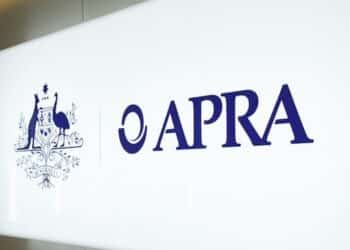Speaking on a policy update webinar on Thursday, the FAAA laid out its extensive concerns with the Compensation Scheme of Last Resort (CSLR).
Chief executive Sarah Abood and general manager of policy advocacy and standards Phil Anderson took a very different tone when discussing the CSLR than the one adopted by Financial Services Minister Stephen Jones in recent weeks.
“The government stands with consumers to ensure there are robust protections in place for them,” Jones said in Melbourne this month.
Conversely, speaking to an audience of advisers on Thursday, Abood said the FAAA was “adamantly opposed” to the way the CSLR has been rolled out.
“I do want to clarify that we have not and do not oppose the scheme in principle,” she said.
“Consumers knowing that they have this access is likely to improve our confidence in the sector. And that is a good thing for all of us.
“What we are opposed to, and adamantly opposed to, is the way that this scheme is being funded and, in particular, the massive legacy overhang that this scheme has been launched with. That was not anticipated when the legislation was introduced.”
More issues than just Dixon
While the minister hailed the passage of the CSLR legislation as a “victory at last for victims of financial misconduct”, Anderson pointed out that advisers see it differently, as they stand to bear significant financial costs due to the CSLR’s outcomes.
While many of the concerns the FAAA raised in relation to the CSLR focused on the Dixon Advisory collapse, it is far from the only issue the association identified on Thursday.
“We’ve been doing our very best to get to the bottom of how this game will work. It is complex, and the disclosure has been, I must say quite poor,” Anderson said.
“In fact, I have to summarise that we are really angry about how this has all landed.”
He added that the disclosure around the scheme in general has been “very poor and disappointing”.
“Look at the explanatory memorandum, the March 2023 bill and the financial impact provides meaningless numbers in terms of what the cost is, whether that’s the cost to the government or its the cost more broadly, those numbers are meaningless,” Anderson said.
“The government also refused to do a regulation impact statement. They relied upon the fact that the financial services royal commission was a process akin to an impact statement, but the royal commission was more than four years beforehand and it was before the Dixon Advisory matter came to light.
“It was not an excuse to avoid the responsibility to do a regulation impact statement, and that left us with very little understanding of what this might mean.”
The FAAA also noted that when the scheme was initially introduced, before it progressed to legislation, the cap on the cost to any individual sector was half of what it is now.
“In October 2021, the maximum amount that the financial advice sector, or any other sector, could be charged was $10 million,” Abood said.
“That increased from September 2022. In fact, it doubled to $20 million and that, on our current numbers, that’s about $1,300 per current adviser.”
Even though the FAAA’s current estimate for the third period of the scheme stands at $29.5 million, surpassing the sector cap, Abood cautioned that this might not prevent advisers from bearing the entire amount of the charge.
“The other point I will make though, is that the minister has the power to essentially ignore that cap, and to charge more if the minister wishes to,” she said.
Advisers paying for Dixon ‘unfair’
Among the FAAA’s principal concerns is that advisers are left holding the bag for a company that collapsed before the scheme was legislated.
“The question that we are asking loudly and publicly is why should the compliant small business advisers of today be paying for the Dixons collapse?” Abood said.
Anderson noted that as originally envisioned following the Ramsay review, the scheme would be “industry-funded, forward looking” and only service unpaid decisions that arise after it is established.
He also explained that in the 10 years prior to the establishment of the Australian Financial Complaints Authority (AFCA), there were $30 million of unpaid determinations.
“That gave us some context that we weren’t talking or suspect that we were talking about very large numbers resulting from this,” Anderson said.
Abood added: “The quantum of Dixon will most likely be many multiples of that, in fact … one estimate is as large as half a billion dollars.”
“Dixon has been a huge impact on the scheme. We’ve described it in various places as a black swan event. The size of this is well in excess of anything that anybody envisaged,” she said.
Anderson explained that one factor contributing to the potential skyrocketing of this figure is the methodology used for calculating losses.
“The administrators, in their analysis of what had happened with Dixon Advisory, focused on losses for one of the investments of a related party of Dixon, the URF, the fund investing in US residential property,” he said.
“They worked out that 4,606 clients of Dixon Advisory had lost money on their investments in URF, and this amounted to nearly $368 million of client money.
“Now, the administrators were looking at this on a simple loss basis, so they were looking at it in terms of the money that they had put in versus what was left in there or what they got out, rather than the way AFCA does, which is assess that on the basis of what their earnings should have been if it hadn’t been invested in an appropriate manner.”
Burden on advisers will continue to rise
The FAAA also pointed to the recent extension of Dixon’s AFCA membership, due to end on 8 April, which only serves to increase the amount advisers will be forced to pay in later periods of the CSLR.
“The estimation is that the quantum of complaints related to Dixon will continue to climb for a number of years,” Abood said.
“The estimate is $18.5 million for the next levy period. That’s just under $1,200 per adviser on our current numbers, but we are estimating that will go up in the third period to $29.5 million.”
This figure was, however, calculated before Dixon’s membership was extended, meaning it could still grow.
Among the other main objections, Abood said, is that the parent company of Dixon Advisory, the listed E&P Financial Group (previously Evans & Partners), has walked away unscathed.
“It doesn’t seem fair, to put it mildly, that the sector has been levied to pay for the cost of an entity that was made bankrupt, that was part of a large listed group,” Abood added.
Her comments came just as E&P Financial Group announced on the ASX that the Federal Court of Australia had approved the $16 million settlement of the class action filed by Shine Lawyers in December 2021 against Dixon Advisory & Superannuation Services (DASS), E&P, Alan Dixon and Christopher Brown.




A fair fee would be $50-$60 per adviser. That’s over $1 million contributed annually by Advisers.
The major contributors should be the beneficiaries being Industry Super Funds. Just look at the inflows they received after the Royal Commission. ART told me they were taking 2 months to process a move into pension mode due to the hundreds of millions received.
Any one feel that FAAA is on the back foot The AIOFP picked up these concerns ages ago and these guys have woken up today
The FAAA needs to hold a public campaign to highlight the conflicted relationship between the ALP and Industry Super. After all, superannuation was set up by Keating and Kelty to salvage the financial positions of the party and the unions, not to actually help ‘working people’ pay for their own retirement. HIT THEM WHERE IT HURTS.
When will a professional association submit Cases before the Federal Court of Australia that opposes discrimination against financial advisers who have done nothing wrong and have never handled client funds? The Legislated discrimination breaches 200-year-old English Common Law principles in procedural justice distributive equity. The draftee of such discriminatory Legislation was probably Treasury which appears to have failed to do appropriate grounded research direct with professional associations and its adviser members, which then misled politicians. Commonwealth Law Reform Commission made up of Judges stated publicly that financial services Legislation is in a mess. Invoicing financial adviser licensees which have already paid Professional Indemnity insurance premiums, have double overhead cost with 2017 ACT for ASIC’s financial adviser levies and triple cost soon with CSLR, which breaches Common Law distributive fairness. Federal Court case would require the Government to submit its evidence and reasons, then the Judge can make a decision to set aside unfair Legislation? (Robodebt revisited) For example, Justice Michael Lee handed down a 300 page finding in a Defamation Case last Monday and FAAA can also claim that Politician’s Legislation had defamed financial advisers, by breaching Common Law and financial advisers should be awarded refunds of all levies to date since 2018. In comparison to SEC in USA precedence, in 2033 it processed 780 prosecutions, imposed US$5 billion in compensations and penalties but not US$1 levy on retail financial advisers who did nothing wrong. How many financial advisers would stand up as expert witnesses in the Federal Court to declare that (1) Government Legislation (and ASIC also) failed to advantage their financial advisory business and (2) the impost of levy effects feels like discrimination and defamation unfairly?
Agree but unfortunately the public don’t care.
FAAA needs to issue a template letter to all advisers, to send to all their clients, explaining that bad regulation has unnecessarily forced up the cost and complexity of professional advice. In spite of promises, Labor has implemented nothing to fix it, but has implemented even more bad regulation that has made the problem worse.
15,000 advisers with an average of 120 clients makes about 1.8M voters who would potentially receive such a letter. That’s about 10% of the electoral roll. And voters trust their advisers far more than they trust any politician. It’s time this power was unleashed.
Good idea. Plenty of people dissatisfied with Labors performance, so that might tip them over the edge. The FAAA could also have a range of social media content advisers could post on social media platforms too. What is going on with the FAAA marketing fund? Use that to create publicity. The FAAA talking to other advisers about how frustrated you are isn’t really doing anything.
Funniest post in ages. “…voters trust their advisers far more than they trust any politician” is hilarious. Start telling your clients how to vote, many will walk away from you. They pay you for a service, not a sermon. Clients are not concerned about the issues concerning financial planners, they will have their own broader issues, beliefs, and voting preferences that will decide how they vote.
In addition to posting comments in the financial press, have you actually made this suggestion to the FAAA?
Shat on from a great height by the Fed Gov, Jones, Treasury, ASIC, AFCA & the courts. This disaster also highlights the impotency of the FAAA & other associations. If now is not the time to turn adversarial then it will never be. Being “really angry” is one thing. Doing something constructive about it is another.
It doesn’t seem fair that advisors will be forced to pay for the legacy left behind by Dixon who walk away unscathed.
But they will.
It doesn’t seem fair that Australian voters are forced to pay for the errors of all and any previous government ministers, who walk away unscathed with lifetime pensions.
But they will.
It doesn’t seem fair that Victorian citizens are saddled with billion dollar debts by incompetent state government parliamentarians who walk away unscathed with lifetime pensions.
But they will.
It doesn’t seem fair that hard working, caring, tax paying, small business, financial advisors are led by the nose to extinction by an incompetent, government paid nincompoop, who walks away unscathed.
But they will.
If you don’t think it’s fair, then you have allowed this to happen and have no-one to blame other than yourselves. Successive governments have stripped away your right to run a profitable business and earn a fair income. Incompetent ministers from Labor and Liberal have removed your rights and dismantled the financial services industry to the point where it is becoming unworkable, unprofitable, unreliable, and unsustainable. Your industry representatives have let you down something shocking over the years, to the point where you have to seriously wonder if it’s worth doing! This (current) government hasn’t finished with you yet. They still need the industry funds to take full control.
But they will.
If you don’t think it’s fair, then it’s best to sell up while you can still get some value for what’s left of your business. Financial advice has been made to be something evil by the Hayne RC and governments haven’t helped to reverse that. In fact, they have sided, saying they are protecting the public. Imbecile Jones expressed just that! People don’t value what they don’t pay for, and they won’t value it until it is too late.
But they will.
Wakey Wakey FAAA.
You have been rolled again.
Learn how to play the political game.
Let Jones know we have x amount of advisers multiplied by all their clients.
ASIC did nothing knowing of Dixon’s dodgy MIS for 10 years and now want good Advisers to pay for their incompetence.
ASIC let Dixon’s float on the ASX knowing the dodgy Dixons MIS problems, allowing the directors of Dixons to pockets $$$$ Millions.
ASIC then advertise for Dixon’s clients to make AFCA complaints, as Advisers will pay via retrospective CSLR.
ASIC should be held liable.
Dodgy Dixons directors and managers should be held criminally liable.
dodgy Dixons directors and managers should fund the client losses personally.
$1,300 per adviser based on current numbers to fund $20 million!
Well, when we still had around 22,000 advisers back in 2019 and the AOIFP couldn’t raise $3 million to challenge the illegal removal of contracted commissions (rights to something of value) in the High Court I was SHOCKED at the lack of B4LLS shown by advisers to stand up for themselves and contribute a mere $100 each for the cause.
WE WOULD HAVE WON AND SHOWN THE GOVERNMENT TO STOP ABUSING US! Now they just continue to show us no respect and treat us with disdain, charging us for a failure of Dixon’s from retrospective to the legislation even being passed????
DISGUSTING AND CRIMINAL
Spot on, I think they only raised around $1.8 million in the end but I had heard that some advisers had contributed as much as $10k to this! sounds like a lot but maybe they had $200k to to $300k that was going to be lost? Based on what the Australian Attorney General told Bill Shorten in 2013 that these commissions were property and the following GF then yes any High Court challenge should have been successful you would think?
it seems criminal to me, “it’s the vibe”
Much like the signed consented contracted grandfathered trails being stopped overnight it is most certainly criminal. Also uniquely Australian stupidity not mirrored in another developed country in the world. Your vibe is ignorant and dismissive, you should be banned from quoting The Castle.
Don’t worry. Soon, there won’t be any dead horses to flog. We would’ve bolted.
Precisely, why we are less than 15k strong when you factor the unregistered ones on the FAR and dropping weekly, understandably. Less advisers to pay these unfair illegal leveys = further increased coosts
What is stopping other investors from other product failures lodging retrospective claims through the CSLR?
That is great that she is angry and disappointed, but what is being done about it? Seriously, we are a laughing stock because we do not have anyone representing us at that level. All talk, no action. Do something about it. ASIC knew about Dixon Advisory for many years but sat on their hands, like many other instances still occurring. It is too late when nothing is being done. Have ASIC pay for the issues, as they knew about all of this, and waited and waited. Finally, something is occurring, but the ‘horse has bolted’. Unfortunately, our representatives are just all talk.